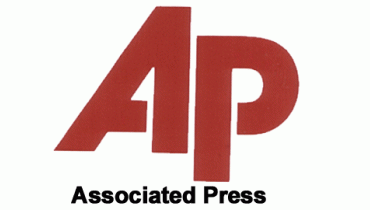7 Essential Tips for Google AdWords Success
![7 Essential Tips for Google AdWords Success [node:title]](/sites/default/files/styles/wide/public/Google-Google-AdWords-Success.jpeg?itok=BZtXYOCE)
Google AdWords, referred to as Google Ads today, has proven to be an effective advertising tool for bringing additional targeted traffic to promote sales.
That said, a successful campaign needs more than running some ads and expecting something to happen. It takes time, strategy, and effort to constantly optimize the campaign.
Whether you are a beginner or someone trying to enhance existing campaigns, consider the following key tips and steps to achieve campaign success in Google AdWords:
1. Define Clear Campaign Goals
When planning to run a Google AdWords campaign, it’s important to have objectives. Who or what are you trying to target within your campaign? Is it website visits and page views, sales, signups or brand awareness?
The objectives will determine the type of available campaign, the created ads, and the measurement parameters. For instance, if your goal is to increase revenue, then consider conversion tracking and use buyer-focused keywords.
Clearly defined goals contain an element of focus that guarantees one’s efforts are sharply focused and directed towards the desired outcomes.
2. Conduct Thorough Keyword Research
An effective Google AdWords campaign cannot be executed without thorough keyword research first. This entails understanding what people are typing in the search to know which keywords should be targeted.
The aim of this step focuses on identifying keywords that are likely to produce results in terms of high-volume search. Keyword research tools you can use include Google Keyword Planner, SEMrush, and or Ahrefs.
Focus on search intent and include broad, phrase and exact keywords as part of the target keywords. Do not forget that while traffic is important, what is more important is obtaining relevant traffic as it is more likely to turn into conversions.
Pro Tip:
Avoid using overly broad keywords as they can drain your budget quickly without providing valuable conversions. Instead, focus on more specific, long-tail keywords that attract highly qualified leads.
3. Optimize Ad Copy for High Performance
Ad copy can be considered the moment a potential customer has been captured and is about to be persuaded to click. It must be precise and articulate the distinct advantage which your product or service provides.
Always strengthen the message with active words that command guidance on the actions that should be followed, such as “Sign Up Now,” “Request a Free Quote,” or “Buy Now.”
Aim to appeal to people’s emotions and incorporate time constraints to increase the urgency and appeal of your ads.
Example:
Transform a generic advertisement with the text saying ‘Buy Running Shoes’ to something catchier such as ‘Get Lightweight Running Shoes - Free Shipping today’.
Also, try to ensure the key headlines and ad description are related to the keywords you are specifically targeting, since ads with a greater relevance receive better Quality Scores from Google which is useful in reducing your cost per click or CPC.
4. Utilize Ad Extensions
Ad Extensions are highly recommended features that can enhance your ads by including further details, thereby increasing the click-through rate (CTR).
Some of the useful extensions Google provides include site link extensions, call extensions, location extensions and callout extensions. These extensions not only improve your ads but also give users more reasons to take action on the ads.
For example, if you are the owner of a local store, the location extension can display your address and the “Get Directions” link. Callout extensions may be used to draw attention to special promotions.
The use of ad extensions alleviates the challenge of having a single static ad, these features also lead to better ad performance and user experience and are likely to increase the number of clicks and conversions.
5. Monitor and Optimize Your Campaigns Regularly
It’s also essential to monitor PPC campaigns such as Google AdWords. This is the only effective way to achieve maximum results for the funds.
In particular, watch for such criteria as click-through rates, conversion percentages and cost per conversion.
If some of the keywords or advertisements do not bring positive results, it is better to stop using them and shift your budget towards those that do bring results.
Use A/B testing on different ad copies and a variety of them to see what audience will be the most responsive. Change the headlines, descriptions and CTAs as a way of optimizing advertisement performance.
Advertising performance improvement may not be a one-day event; hence one must always be flexible in regard to strategies being used and fine-tuning.
6. Leverage Negative Keywords
A big part of using Google AdWords that is often overlooked is the application of negative keywords. These are words or phrases that you do not wish your ads to be shown.
Negative keywords do not shut out potential customers, they eliminate search terms that will lead to a smaller conversion rate. This measure can help cut spend and improve the performance of a campaign’s increment.
For example, a running shoe company might want to put the words “cheap” or “discount” as negative keywords to avoid deal seekers.
It is advisable to check the search terms report regularly to track unnecessary keywords that were searched and add more negative keywords where applicable.
7. Track Conversions and Set Up Remarketing
For businesses, this is a necessary step to take whether you are running a small shop or a large corporation – tracking conversions helps them determine the effectiveness of their campaigns.
It is recommended that you enable the conversion tracking feature of Google Ads and monitor user activities including but not limited to purchase sales, form submissions or even making phone calls. This information will be necessary in helping you evaluate the return on your investments and in budget decisions.
Apart from conversion tracking, it may also be necessary to run remarketing campaigns. Remarketing simply refers to the process of tracking the website users who visited but never converted, so one can show them the website ads anywhere on the internet.
So, even if the user leaves the page without completing the necessary action, it is possible to show them ads again to increase the probability of completing such actions.
Example:
If a customer comes to your online website and clicks some specific items, then you can show those same items in a remarketing ad with a discount.
Conclusion
To experience the success you wish with Google AdWords, a combination of efforts like planning, close follow-ups, and adjustments of strategies is essential. Setting specific goals, getting good keywords, writing good ads, using ad extensions and remarketing would help you optimize your campaigns.
As for those who want to improve their own Google AdWords efforts, I would recommend hiring a Google AdWords marketing agency or a good digital marketing agency around you. These experts have the knowledge to do the work for you which will save you time and achieve the best outcomes.
If the ideas are put in the right way and the readiness to change is there, the full possibilities of Google Ads can be utilized in any particular business.





















